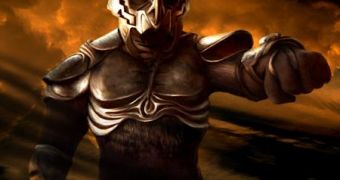As evolved as humans are, the dominant species of this planet has not evolved much, in terms of man-to-man combat, beyond the stone-throwing ability developed by our ape-like ancestors, around 4 million years ago.
First, apes learned how to throw a stone. Then, early humans learned how to attach the stone to a stick and they invented the spear and the arrow. Then they realized physical strength is not enough to throw a stone beyond a few hundred feet, and they attached it to an elastic material, to create the slingshot. The Chinese thought that the expanding gas from an explosion could propel a projectile farther than any human could, and they invented the gunpowder. Yeah, sure, some other genius replaced the stone, or the arrow with a small piece of lead, or iron, or steel, and the bullet came out, forgive the pun.
So, modern warfare, with its modern bullets and firearms, is basically still in the "projectile age".
If you read the title and don't fall asleep during the introduction, you know that I'm going to talk about the most "modern" defense against projectiles: the bulletproof vest, aka ballistic vest, aka body armor.
A bullet-proof vest (also known as body armor) is a protective torso covering that absorbs the impact from gun-fired projectiles and explosive fragments. Soft vests made from layers of tightly-woven fibres protect wearers from projectiles fired from handguns, shotguns, and shrapnel from explosives such as hand grenades. When titanium or ceramic plates are used with a soft vest, it can also protect wearers from shots fired from rifles and automatic rifles. Soft vests are commonly worn by Police forces and private security guards and hard-plate reinforced vests are worn by combat soldiers in the armies of the major industrialized nations. A number of countries restrict civilian ownership of body armor to security-related employees, most notably Australia.
The basic idea behind body armor hasn't changed very much for the past few thousands years.
The main purpose of the armor is to stop weapons or projectiles from penetrating a person's body and to diffuse the weapon's impulse energy, so that the final impact causes little or no damage at all.
Although not effective in absolutely every situation, armor can generally help protect people from serious injuries or death, being effective especially against the right weaponry.
Humans have been wearing armor for thousands of years. Ancient tribes fastened animal hide and plant material around their bodies when they went out on the hunt and the warriors of ancient Rome and medieval Europe covered their torsos in metal plates before going into battle. By the 1400s, armor in the Western world had become highly sophisticated. With the right armor, you were nearly invincible.
So, how can you catch a bullet and live to tell the tale?
Bulletproof vests are made not of cloth, but of a polymeric material called aramid fiber. And the science that helped in creating the material had nothing to do with stopping bullets. Rather, it was developed for a more unlikely reason - to design better tires for your car.
DuPont developed a synthetic fibre in the early 1970s called Kevlar for use in radial tires. Since then, the material has come to be used in hundreds of items, such as bulletproof vests, windsurfing sails, rope, military helmets and sporting goods. It's one of the toughest materials in existence.
Absorbing energy is the whole point of a bulletproof vest. The goal is to resist the impact of the bullet. That means you have to find a way to absorb the bullet's energy once it's been shot from a gun. In a bulletproof vest, the aramid fibers are put together in a matrix, the same way we make fiberglass or plywood. You weave the fibers into a fabric and then cross-lay successive layers so you get the strength of the aramid fibers in all directions. This way, there are no weak spots. The fibers themselves are incredibly tough, but it's the method of weaving them and cross-laying them that enables the vest to absorb the energy of the bullet and then dissipate that energy across the vest so the bullet doesn't penetrate the wearer.
Aramid fiber products such as Kevlar or Nomex (the latter is usually used for fire-resistant materials) are just about as tough as steel. Steel is tougher, but much heavier. In an application like a bulletproof vest or helmet or sail, you want toughness but also a lightweight quality. So the aramid fiber products provide extreme toughness, plus they are light enough that a person can wear the vest (they normally weigh about five pounds) or a boat can support a sail made of the fiber.
Vests may be augmented with metal (steel or titanium), ceramic or polyethylene plates that provide extra protection to vital areas. These hard armor plates have proven effective against all handgun bullets and a range of rifles. These "tactical body armor" vests have become standard in military use, as soft body armor vests are ineffective against most military rifle rounds.
In recent years advances in material science have opened the door to the old idea of a literal "bulletproof vest" that will be able to stop handgun and rifle bullets without the assistance of heavy and cumbersome extra metal or ceramic plating, with the use of nanotechnology.
Unfortunately, not even the best body armor or bulletproof vest can't protect you indefinitely, so Superman is the only one who can "eat" as many bullets as he wants and still get out of it alive, and he's not even real...

 14 DAY TRIAL //
14 DAY TRIAL //